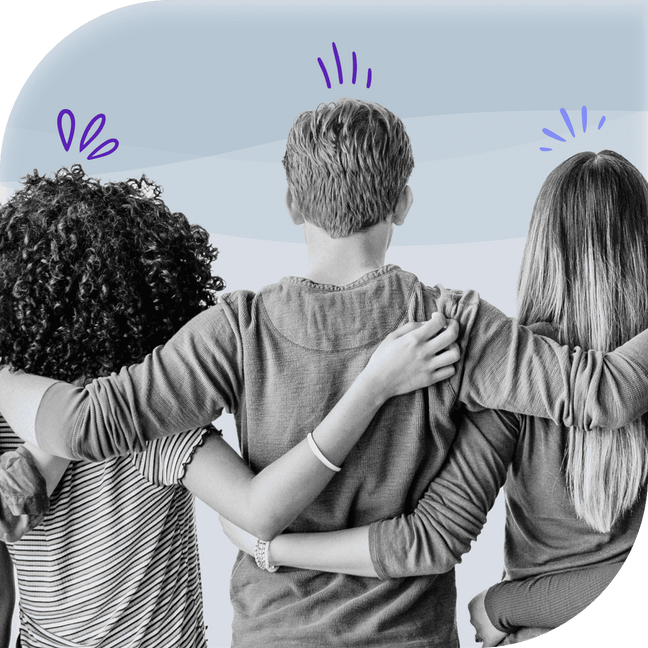Inclusion
Written by
Tiffany ClarkAbout the Author
Tiffany is an experienced workforce development expert with extensive experience in the public sector, course development, and online learning.
Reviewed by
VidCruiter Editorial TeamAbout the Reviewer
The VidCruiter Editorial Team offers practical recruitment advice, drawing on insights from seasoned professionals. Our award-winning content, supported by industry specialists, underscores VidCruiter's dedication to innovation in recruitment.
Last Modified
Apr 17, 2024
Inclusion
Inclusion can be defined as a sense of connection, belonging, and community in a workplace. Organizations that are inclusive help all stakeholders and employees feel known, welcomed, and valued. Moreover, inclusive workplaces encourage employees to bring their whole selves to work with them. Inclusion benefits employers as much as workers.
An organization that builds an inclusive culture allows employees to feel comfortable being themselves without putting up pretenses. This practice leads to increased engagement and confidence. When employees feel valued and included, their workplace contributions will likely be more valuable. Included employees feel empowered, which leads to more productivity and independence.
Inclusive workplaces share the following characteristics:
-
Appreciation and respect are shown for the cultural values and backgrounds of all team members.
-
Team members have a voice.
-
Value is placed on equity more than equality.
-
The company aligns strategically with inclusive practices.
-
Inclusive language is part of the company's internal and external communications, including promotional materials, job advertisements, and job descriptions.
-
Employees feel that they're valued.
-
The organization fosters a collaborative environment.
-
Pay structure is equitable and fair.
-
Employees are motivated to act inclusively.
-
Company-wide celebrations and activities are inclusive and welcoming to all employees.
-
The organization supports and embraces change and encourages employees to do the same.
-
Honest and open conversations about unconscious bias are encouraged.
-
The company is open to differing viewpoints from employees.
-
The work environment is safe for all members of the team.
-
Development and learning opportunities are easily accessible.
-
Transparency is provided in workforce decisions.
-
All team members have equal access to resources.
Examples:
Some examples of inclusion include:
-
Having a private prayer room to accommodate the religious needs of employees
-
Providing gender-neutral restrooms
-
Celebrating diversity during Black History Month, Pride Month, National Disability Employment Awareness Month, Indigenous Peoples Day, and Women's History Month
Related Terms
Inclusive Hiring
refers to a company's practice of minimizing bias and creating an equitable recruiting, application, interview, selection, and hiring process. Inclusive hiring aims to recruit and hire employees from diverse backgrounds, and inclusive hiring can level the playing field for applicants of all backgrounds, ages, abilities, genders, races, sexual orientations, and more.
Inclusive Language
avoids expressing or implying ideas that are sexist, racist, or otherwise biased, discriminatory, or insulting to people. In terms of hiring and recruiting practices, inclusive language avoids marginalizing people based on their social identities or lived experiences.
Inclusive Workplace
DEI Policy
is the term used to refer to an organization’s policies or programs used to promote Diversity, Equity, and Inclusion values. Having a DEI policy in place encourages recruiters to recruit and hire diverse team members and build a welcoming workplace that is free of discrimination.
Diversity, Equity, Inclusion, and Belonging (DEIB)
Diversity, Equity, and Inclusion (DEI)
are frequently grouped together because the three concepts are interconnected. When used in combination, a complete impact emerges. The three words describe values that organizations strive to embody so that theory can meet the needs of employees from all walks of life.
Justice, Equity, Diversity, and Inclusion (JEDI)
is a framework that organizations and individuals can use to create a more equitable, inclusive, and just society. JEDI is an intersectional approach that recognizes that issues of justice, equity, diversity, and inclusion are interconnected and cannot be addressed in isolation.
Justice refers to the fair and equitable treatment of all individuals, and the creation of a society that is free from discrimination and oppression. This includes addressing systemic issues such as poverty, racism, and other forms of injustice.
Equity refers to the fair distribution of resources and opportunities, taking into account the different needs and circumstances of individuals and communities. This means recognizing and addressing the ways in which historic and current systems of oppression have led to disparities and working to ensure that everyone has what they need to succeed.
Diversity refers to the recognition and valuing of differences among individuals and groups. This includes differences in race, ethnicity, gender, sexual orientation, ability, age, and other characteristics.
Inclusion refers to the active engagement and involvement of individuals and groups who have been historically excluded or marginalized. This includes creating an environment where everyone feels welcome, respected, and able to fully participate.
Together, these elements work to create a more just, equitable, diverse, and inclusive society, where everyone has the opportunity to thrive.